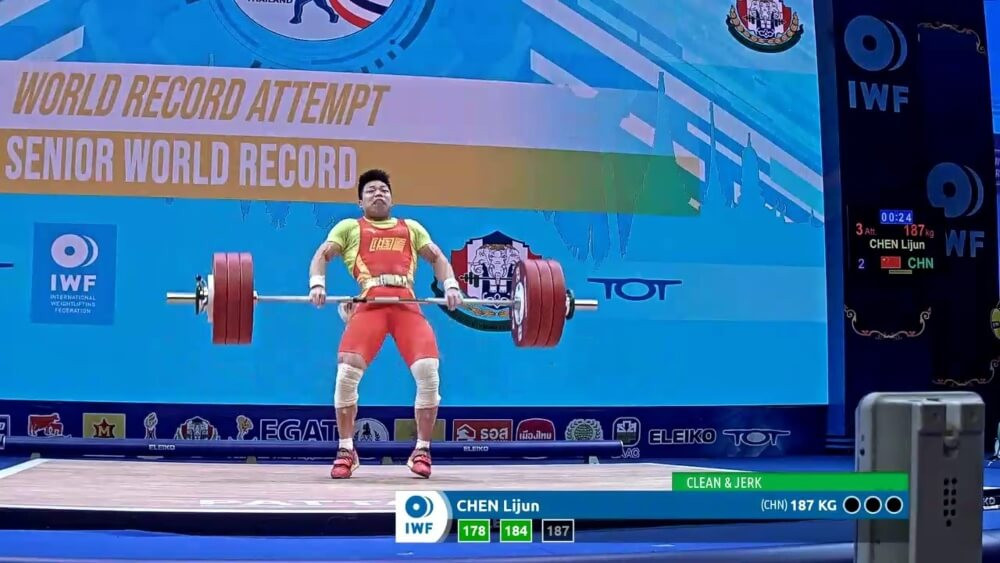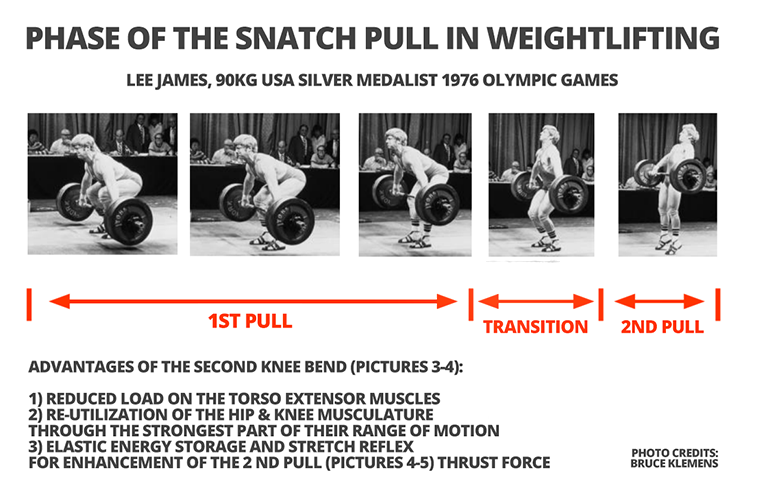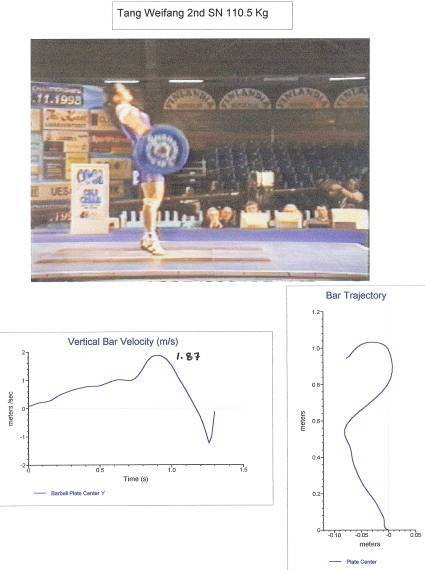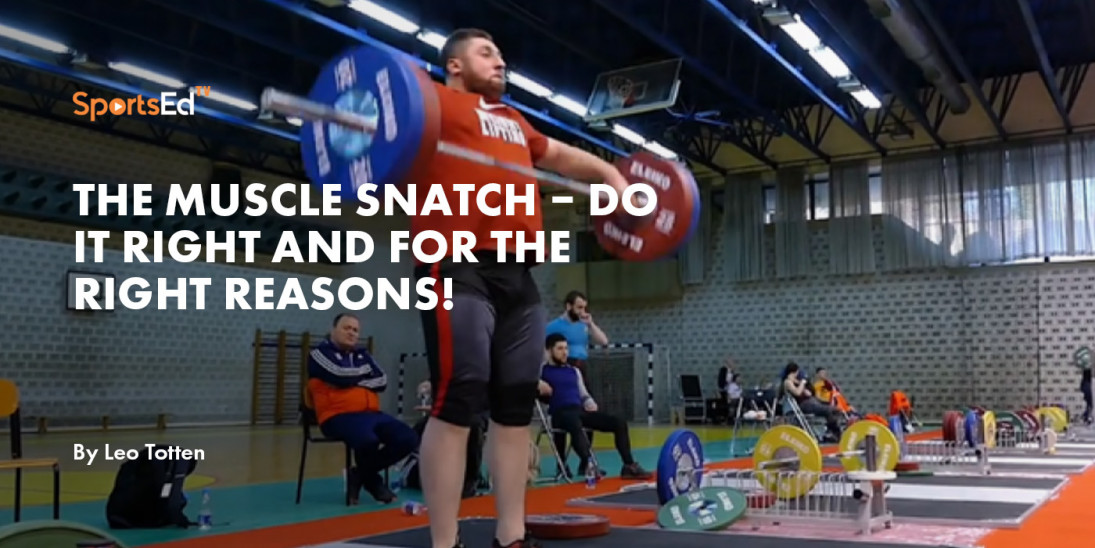Weightlifting
Welcome and thanks for visiting...

A History of the Pull in Weightlifting

Over more than four decades noted biomechanist John Garhammer, PhD has contributed a huge amount of published scientific work related to weightlifting and strength training. Recently retired from California State University, Long Beach Professor Garhammer reflects a unique knowledge of the sport, as he also competed in the sport for 50 years. We are pleased to have Dr. Garhammer serve as a Senior Contributor for SportsEdTV.
The following blog highlights key points seriously worthwhile for coaches and athletes that study SportsEdTV’s weightlifting content. Topics include a brief overview of basic pulling technique, bar velocity and trajectory, and centers of pressure on the foot. Readers are encouraged to access Dr. Garhammer’s larger presentation that expands on this blog. Here a greater number of photos and illustrations further reinforce the points made here.
The full presentation consists of data from more than 30 years of careful examination, ranging from the 1978 World Championships to the 2009 Pan American Championships.
Over the years I have presented details on weightlifting’s pulling technique to many audiences. Included here is a review of scientific works starting at the 1978 World Championships and concluding at the 2009 Pan American Championships.
I want to emphasize that the information presented here is not simply my opinion. The snatch and clean pulls shown here are executed by (1) World and Olympic champions and record holders; (2) USA National champions and record holders; and (3) Pan American champions.
The positions are clearly seen by anyone who watches the many hours of film and video that I have taken from 1978 to 2009. I have also analyzed top lifts from many national-level meets and they do not differ from what is shown here. Included are a few example sequences from USA Nationals.
The Basics of the Modern Pulling Technique
The evolution of today’s so-called “double knee bend” technique began in the 1960s. We learned a great deal about this through the writings of Carl Miller, our national coaching coordinator in the 1970s.
The key characteristics include:
- The first pull from lift-off until the bar reaches knee level, during which the hip and shoulder joints rise at the same speed so that lines drawn from the hip to shoulder are parallel.
- This is followed by a reorientation of the body during the transition phase. Here the hips move forward and downward, and the torso moves to a vertical or near-vertical position. Check the hip joint tracing on the stick figure, and photo sequence of Lee James.
- The second pull - an explosive “jumping” action (triple extension – hip, knee and ankle joints) follows with a rapid forceful shrugging of the shoulder girdle.
The Lee James sequence is ideal, but some athletes lift the hips faster than the shoulders during the 1st pull, and some do not reach a completely vertical torso position before initiation of the 2nd pull. These “variations” are likely due to anthropometric differences (body segment length differences) and/or specific muscle group strengths and weaknesses.
As you view the following lifting sequences look for the movement characteristics and variations listed above. No matter what words or terminology you use or are used to hearing, it is the movement pattern characteristics that are important for coaching technique!

Let’s look at this movement with a stick figure, in this case, Albert Hood, USA 1984 Olympian.
 |
| Note the curved line connecting the hip position during the 1st pull (upward movement), transition (forward and downward movement), and second pull (upward movement). |
Velocity
Now, let’s look at barbell velocity. This graph shows the vertical velocity of the bar during the snatch pull. During the “transition” phase between the 1st and 2nd pulls many lifters have a decrease in bar velocity. It is usually greater for bigger/taller athletes.
Here are snatch velocity details for two gold medalists from the 1984 Olympic Games, Wu Shude (56kg, CHN) and Dean Lukin (+110kg, AUS) that illustrate this fact. Note Lukin’s decrease in velocity as he repositioned during the transition phase.

More recently more and more athletes show a leveling of velocity during the transition and a few show an almost continuous rise in velocity during the entire pull. This is not a different technique, but a smoother pull due, in part, to optimal anthropometrics.
Here is a later example (1998 World Championships) of this leveling off of velocity.

Center of Pressure on the Foot
Here, and at the end of the full presentation, I include a slide that shows the balance on the feet during the snatch or clean pull. The data are from three-time USA Olympian Mario Martinez’s attempts during the US Olympic Committee’s Elite Athlete Project, 1982 – 1984.
- From force plate measurements you can see that the lifter’s balance on the feet moves from between the ankles and balls of the feet at lift-off backward (toward the heels) during the 1st pull.
- It then moves forward to the balls of the feet during the transition, when the ankles and knee flex.
- Balance remains at the balls of the feet during the 2nd pull.
The shift backward and forward varies from athlete to athlete but always occurs. It may be less or greater than others primarily due to differences in athlete size.

The pull patterns illustrated in this presentation are a well-distributed representation of how elite weightlifters executed the Snatch and Clean pull in major competitions between 1978 and 2009.
It is clear that these patterns contain all the primary elements of what was called the “double knee bend” technique as taught in the 1970s and illustrated in the first few slides of this presentation.
There are some small differences, such as how close to vertical the torso is at the end of the transition to the power position, which is the position to start the second pull.
Hundreds of additional lifts from the same major competitions and U.S. National Championships and American Championships have been analyzed from film or video to support what has been presented in this short overview.
For access to the full PowerPoint presentation with its greater number of illustrations, please click here.





